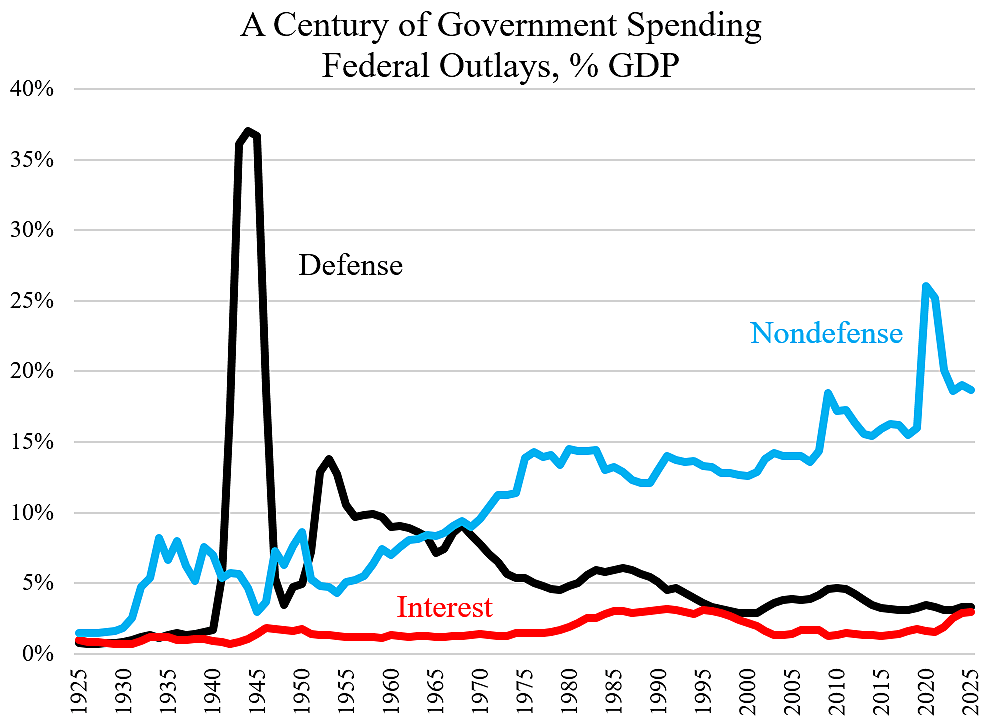President Biden’s new budget confirms that we are in the midst of a historic ratcheting up of government spending. Federal spending is substantially higher post-pandemic than pre-pandemic, just as spending reached new plateaus after 9/11 and after the Great Recession of 2007–2009.
The chart shows federal outlays as a percent of gross domestic product (GDP) from 1925 to 2025. The figures for 2023 to 2025 are Biden’s new estimates.
Let’s look at nondefense spending, which includes everything from agriculture, to education, to transportation, to Social Security:
- 1925–1955. Nondefense spending soared during the New Deal and afterwards from 1.5 percent of GDP in 1925 to 5.1 percent by 1955. Defense and nondefense moved in opposite directions during the 1940s and 1950s, suggesting that Congress traded off priorities to an extent.
- 1955–1975. Nondefense spending rose rapidly from 5.1 percent in 1955 to 13.9 percent by 1975. During this period, all the presidents were big spenders on nondefense programs.
- 1975–2000. President Ronald Reagan cut nondefense spending, while President George H.W. Bush increased it. President Bill Clinton restrained spending while GDP grew quickly in the late 1990s.
- 2000–2025. After a 25-year period of relative restraint, nondefense spending soared in the new century as a result of three disasters (9/11, the Great Recession, and COVID) and the disappearance of political leaders focused on spending reform. Presidents George W. Bush, Barack Obama, Donald Trump, and Joe Biden have all been big spenders, as have been most congressional leaders during this period.
Fiscal discipline has collapsed since 2000. Let’s put some numbers on it:
- Nondefense spending in 2023 is 18.6 percent of GDP, up from 12.6 percent in 2000. Thus, nondefense spending gobbles up a 48 percent greater share of the economy today than two decades ago.
- Nondefense spending of 18.6 percent of GDP this year is $4.9 trillion. If we had restrained spending to the Clinton level of 12.6 percent, we would have saved $1.6 trillion this year, enough to wipe out the deficit and balance the federal budget.
How can we revive 1990s-style fiscal restraint? Romina Boccia has some ideas here, and I’ve proposed spending reforms here.
Data Note: Spending is from the budget historical tables. But prior to 1940, I used a historical Treasury dataset for the detail on defense and interest spending.

